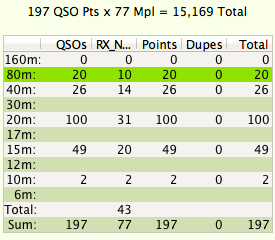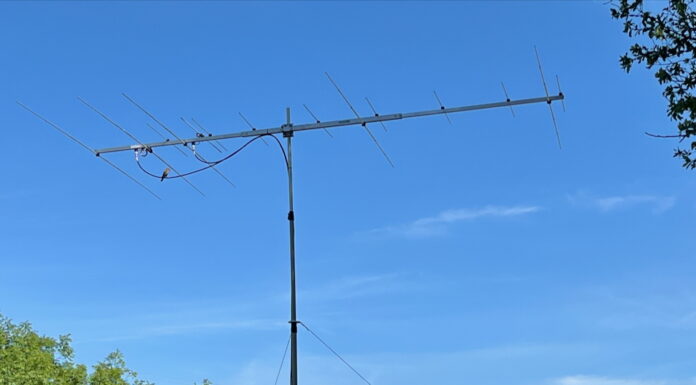QRP, however, can be quite a bit more frustrating than Low Power. At least with Low Power, most of the stations answer my calls and you can get through pile ups a bit better. With QRP you’re lucky if they can hear you at all. Then, when they do, it’s back and forth trying to get the call sign correct and the exchange. Thanks so much to some great operators who really work to dig out your signal from noise (QRN) and station interference (QRM).
 Given all that, my overall score wasn’t too bad. You can see nearby that I had 197 QSO’s for just over 15,000 points. If I’m reading the logging software correctly it appears that I worked 43 states. I usually try to erect a temporary antenna to help with the contest. Usually, that has been my Moxon beam on 15 meters. However, my Texas location with this USA contest means I need to work in all directions save south. So my existing verticals work well for the contest. However, I felt that an 80 meter dipole might help the effort with some higher angle radiation to snag the closer stations. It worked pretty well and lowered the noise level on 80 as well. It didn’t really work on 160 meters. Plus, operating QRP on 160 is only for the brave.
Given all that, my overall score wasn’t too bad. You can see nearby that I had 197 QSO’s for just over 15,000 points. If I’m reading the logging software correctly it appears that I worked 43 states. I usually try to erect a temporary antenna to help with the contest. Usually, that has been my Moxon beam on 15 meters. However, my Texas location with this USA contest means I need to work in all directions save south. So my existing verticals work well for the contest. However, I felt that an 80 meter dipole might help the effort with some higher angle radiation to snag the closer stations. It worked pretty well and lowered the noise level on 80 as well. It didn’t really work on 160 meters. Plus, operating QRP on 160 is only for the brave.
I also ran this year as part of the DFW Contest Group’s QRP Team, called the Nachos. We actually had 6 group members sign up for QRP entries, but only five to a team. It will be interesting to see how the team fares in the competion. This is a new experience for me.
Next steps for improvement are to do some fine tuning on the resonance of the 80 meter dipole for next time. I also need to consider whether I should enter some of the DX contests in the QRP category. Hope to hear you on the air!








